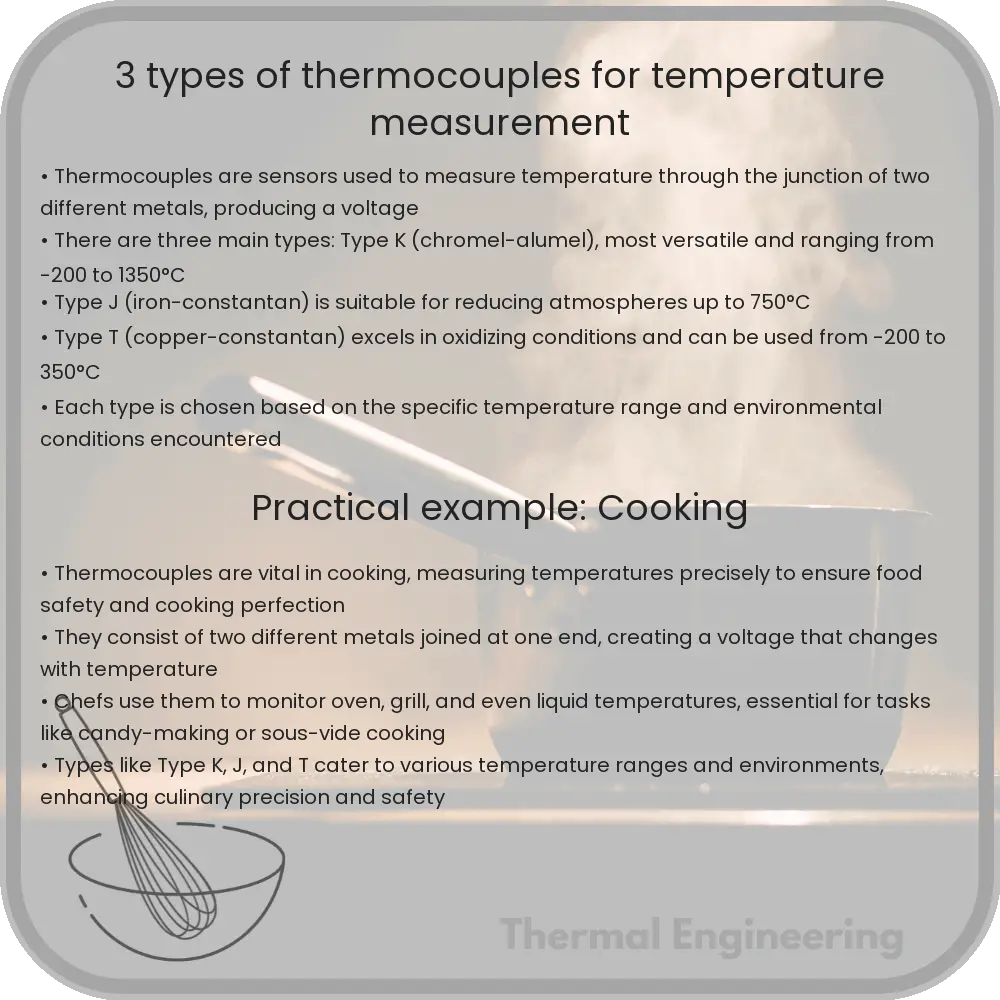Learn about thermocouples, essential temperature-sensing devices used in various industries, functioning on the thermoelectric effect to measure diverse temperature ranges accurately.

Introduction to Thermocouples
Thermocouples are widely used temperature-sensing devices that can measure a wide range of temperatures with varying degrees of accuracy and reliability. They function based on the thermoelectric effect, in which a voltage is generated at the junction of two different metals that varies with temperature. This voltage can be measured and converted into a temperature reading. They are essential tools in industries like aerospace, automotive, and manufacturing due to their simplicity, robust response, and broad temperature ranges.
Types of Thermocouples
There are several types of thermocouples, each made from different metallic elements and having distinctive characteristics and uses. The three most commonly used types are Type K, Type J, and Type T.
Type K Thermocouple
The Type K thermocouple, also known as Chromel-Alumel, is made from nickel-chromium and nickel-aluminum alloys. It is the most common general-purpose thermocouple due to its low cost and robust nature. Operating over a temperature range of -200°C to +1350°C, it is well-suited for applications in environments with vast temperature fluctuations. Type K is commonly found in applications involving furnaces, gas turbine exhausts, and other high-temperature industrial processes.
Type J Thermocouple
Type J thermocouples consist of an iron wire paired with a wire of constantan (copper-nickel alloy). They are used in vacuum, oxidizing, reducing, and inert atmospheres, although they have a more limited temperature range compared to Type K. The operating range for Type J thermocouples is typically -40°C to +750°C. They are often employed in the plastics industry and for metal processing, especially when high sensitivity is required at lower temperatures.
Type T Thermocouple
Type T thermocouples are made from copper and constantan, making them highly stable and suitable for measurements in moist environments. They are particularly useful for measurements in the range of -200°C to +350°C. Due to their good resistance to corrosion in wet environments, Type T thermocouples are commonly used in applications involving food processing and storage, pharmaceuticals, and other chemical experiments.
Choosing the Right Thermocouple
Selecting the correct thermocouple for a specific application depends on several factors including temperature range, environmental conditions, required durability, and accuracy. Type K is preferred for high temperatures and where cost is a concern. Type J is chosen for high sensitivity at lower temperatures, and Type T is optimal for stable readings in lower temperatures and moist conditions.
Understanding the distinct attributes of different thermocouples aids in optimizing performance and accuracy in various industrial and scientific applications. Each type ensures that users can find an appropriate solution tailored to their specific measurement needs.
Conclusion
Thermocouples are essential tools for reliable and accurate temperature measurement. Whether monitoring temperatures in harsh industrial environments or in delicate laboratory settings, understanding the differences between Type K, Type J, and Type T thermocouples helps select the best-suited device for the task. This knowledge guarantees efficient and effective temperature management across a variety of disciplines.